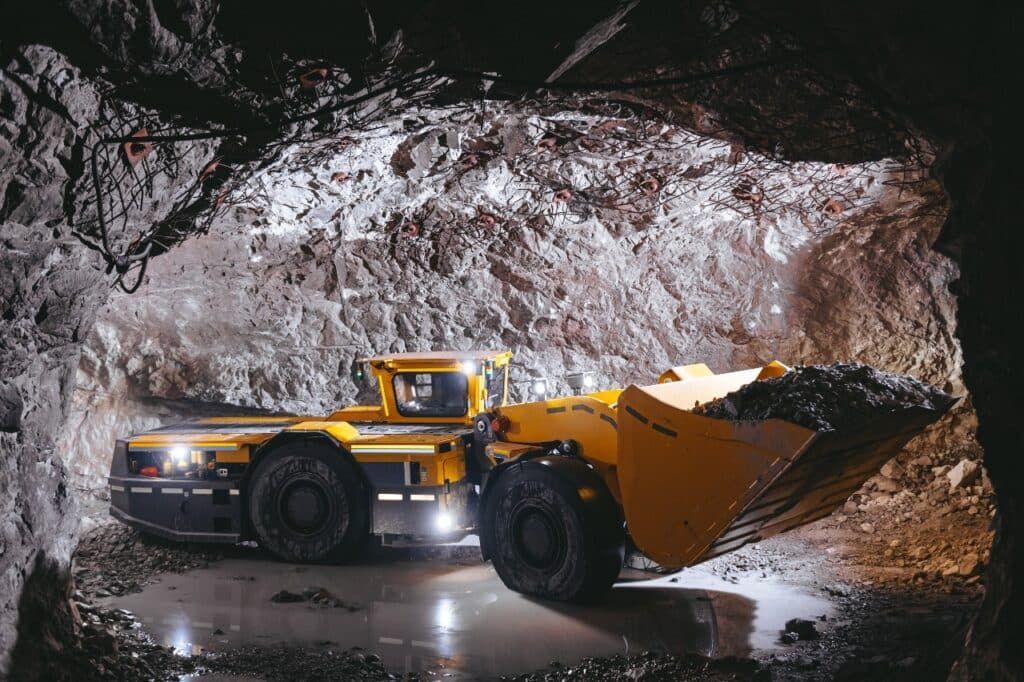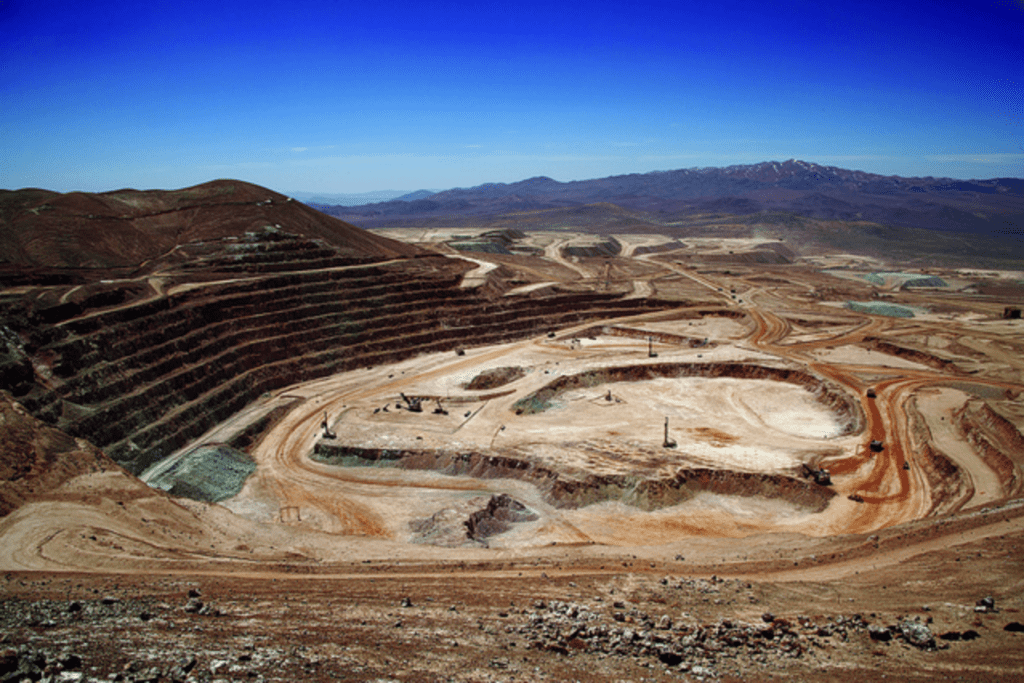Has mining lost its luster? Why talent is moving elsewhere and how to bring them back
A well-managed, motivated, and trained workforce has been a core driver for productivity and safety in mining; an unprecedented skills shortage in the mining industry is elevating talent to the top of miners’ agendas.
Three cross-industry trends are converging to trigger far-reaching changes within the mining workforce. First, the nature of work itself is evolving, with an increasing focus on automation, algorithms, and a growing need to be digital savvy—resulting in an estimated one in 16 (more than 100 million) workers globally needing to find a different occupation by 2030. Second, workers’ preferences are shifting. Following the COVID-19 pandemic, 40 percent of employees said they were likely to leave their jobs in the next six months, prompted by various factors, including changes in life priorities. Finally, ways of working are evolving: a recent McKinsey Global Institute report indicated that 72 percent of executives say their organizations have started adopting permanent remote-working models.
Simultaneously, global energy uncertainty alongside price and demand rises in commodities that enable electrification (such as lithium, iron ore, and copper), as well as heightened expectations in terms of environmental, social, and governance (ESG), are ramping up pressure for mining employees to perform and deliver more. Considering all this change, what are the implications for the mining industry’s talent?
This article explores our latest research into the talent imperative for mining, covering why hiring and developing the right talent is increasingly crucial for miners, what’s driving the talent squeeze in mining, and how miners can reverse the trend.
Why miners are feeling the talent squeeze
Traditionally, the value derived from mining companies has been thought about in terms of commodity prices, ore quality, location, reliability of equipment, and physical assets (for example, processing plants). However, talent is increasingly being elevated from a simple enabler to a true value driver. Importantly for miners, they can enhance performance through comparatively low investment in talent and within shorter timeframes than can be achieved by seeking to alter the physical attributes of an asset: for example, a gifted metallurgist, effective mine planner, or talented commodity hedging analyst can have significant impact on a mining company’s value relatively quickly.
Traditionally, the value derived from mining companies has been thought about in terms of commodity prices, ore quality, location, equipment, and physical assets. However, talent is increasingly being elevated from a simple enabler to a true value driver.
That said, mining companies are experiencing a talent squeeze: 71 percent of mining leaders are finding the talent shortage is holding them back from delivering on production targets and strategic objectives. Indeed, 86 percent of mining executives tell us it is harder to recruit and retain the talent they need versus two years ago—particularly in specialized fields such as mine planning, process engineering, and digital (data science and automation). We expect this trend to continue. Mining is not currently an aspirational industry for young technical talent to join: there has been around a 63 percent drop in mining engineering enrollment in Australia since 2014,and a 39 percent drop in mining graduations in the United States since 2016.
Recent public failures of the industry relating to safety, destruction of indigenous cultural sites, and workplace culture have also adversely affected the mining sector’s ability to attract talent. Accordingly, we expect that the mining industry will be asked to make significant progress in coming years around increased accountability for ESG issues, scaling of renewables on-site, automation, and a changing associated workforce.
Delivering the necessary change and innovation will require long-standing issues to be addressed so that the best talent is excited to join the industry. To better understand the talent-related issues and opportunities within mining, we have interviewed a cross-section of miners to enable us to form a perspective along the entire talent life cycle (Exhibit 1). The results have highlighted several structural strengths and challenges that tend to apply in most cases. For each of these challenges, we explore traditional and analytical options for miners to apply.
Exhibit 1 (please refer to the link below)
Structural strengths
Areas such as remuneration, tight-knit communities, and teamwork are typically well managed by mining companies. Remuneration is seen as a particular strength for the front line, with few competitive alternatives available in most geographies for similar skill levels. Social climate and teamwork often stem from the often-remote location of mine sites, with people tending to form stronger ties to their teammates and the community in both the workplace and informal settings.
Structural challenges
For the large number of mines that are remote, we observe a set of additional significant structural challenges, such as lack of sophisticated infrastructure (hospitals, schools, entertainment) and therefore lower family friendliness. Equally, there is the perception that the work is physically demanding and hazardous. Then, once talent has been attracted and employed, additional pain points often include uninspiring capability development (beyond standard occupational training), limited or vaguely defined career progression pathways beyond middle-management layers, and insufficient levels of diversity and inclusion.
Such issues have been historically associated with mining—what’s changed today, however, is that more recent macro trends have brought these challenges into sharper relief. These trends include a greater focus on challenges for minorities and women in mining, Gen Z’s expectations to have purpose at work, an increasing disconnection between what workers want and managers provide, and competition for digital and technical talent among all industries.
How to reverse the trend
We believe that now is the time for many miners to act—before structural talent issues eat further into industry performance. To help navigate the way forward, we see four areas of intervention for mining companies to consider and also offer a more detailed exploration of the implications of each recommendation.
1. Treat talent as a strategic pillar, alongside safety, production, and cost
Talent is often treated as an “HR problem,” which we believe fails to appreciate the complexity and value being left on the table by not making it an all-executive agenda item. We heard from one global miner HR lead, who said, “Miners spend enormous time, focus, and energy on optimizing production by 2 percent, while talent topics rarely get the same level of urgency, except in a crisis.”
- Elevating this topic practically means investing continuous effort into maintaining an up-to-date talent strategy. This should (as a minimum) answer questions around strategic workforce planning, such as talent requirements for future years, planned attrition rates, and talent sources. A good talent strategy goes further, formulating a view on critical roles and capabilities that can drive disproportionate incremental value to the business if set up properly. Getting this right in mining could look like a best-in-class mine planning function that drives higher productivity for hundreds of frontline operators in the pit. Miners are well advised to quantify their talent strategy and plan with the same rigor as they do for production planning. This means shifting from a short-term workforce plan (typically one to three years) to a truly long-term strategic workforce plan aligned with the long-term mine plan (often ten to 20 years), harnessing the formidable amount of information available in the various asset plans (such as technology shifts, new assets, large capital projects), and translating it into a people plan.
Miners spend enormous time, focus, and energy on optimizing production by 2 percent, while talent topics rarely get the same level of urgency, except in a crisis.
- Update the talent strategy regularly, just as production plans are continuously adjusted over time. Implementation of strategic priorities should be tracked, discussed, and de-bottlenecked at the highest level, becoming a standard agenda item for regular executive discussions. For one miner in North America, this was as simple as adding “people” to the monthly executive committee meeting agenda straight after the “safety share” to ensure discussion of talent headlines including successes, resignations, or recruitment challenges.
- Formulate and maintain a robust, data-driven view of your company’s employee value proposition compared with competition both inside and outside the industry. A miner’s EVP should be viewed broadly, going beyond remuneration benchmarking to include overall employee experience (EX), mobility opportunities, capability-development opportunities, and workplace culture. These can be viewed as “soft” factors, but there are also data-driven approaches that miners can take, such as testing your EVP widely with focus groups from target talent pools to ensure it resonates. For example, using sentiment analysis and natural-language processing on publicly available employee review data (for instance, Glassdoor, LinkedIn) can provide valuable insights with regards to one’s own culture, and it compares with other players.
2. Double down on what matters to employees
Data from the McKinsey Great Attrition survey reveal a disconnect between what managers believe their employees are looking for and what is most valued by employees. Miners have the same problem with a disconnect between why people leave mining and what their managers believed to be the cause (Exhibit 4). Asking employees what they truly want and what frustrates them most is not a natural strength for most organizations, but it is a huge source of insight for talent attraction and retention.
- Listen to what employees want using analytics to uncover what remains “unsaid.” Consumer industries are extending the curiosity they usually reserve for customers to their employees, to understand what they truly want. Miners can apply similar approaches to solve internal talent pain points and listen to their workforce. Hold meaningful focus groups to dig into employee experience survey results. Bolster this by using analytics to understand why people leave and whether they are happy, for example scraping online public platforms (such as LinkedIn, Glassdoor, Fishbowl) to understand sentiment and pain points.
- Invest capital to solve persistent site infrastructure problems. We consistently see challenges around camp infrastructure (for example, rooms, gym equipment, library), connectivity (for instance, Wi-Fi), and non inclusive amenities (such as female bathrooms in the pit, day care in offices). These gaps are immediate turnoffs for young and mature talent but require relatively low investment to fix. This should be elevated in a miner’s capex portfolio and made a “hygiene factor” in how sites are run. These investments should be prioritized based on analytics of what employees want, drawing on multiple facts and data sources (for instance exit interviews or social media). Ultimately, cost cutting on site infrastructure may provide short-term budget relief but drives long-term pain if only the “B team” is attracted to the site.
- Get ahead on what the next generation of talent values. Young talent expects more flexible working arrangements and workplace inclusion than previous generations. Lagging miners lose talent to those that embrace change, also putting them on the back foot as regulatory mandates shift (for example, Canadian standards for workplace respect. Build on what was learned about remote working from COVID-19 and test other flexible options (such as new shift patterns, on-site supervision via camera, new cultural norms). Ask the front line and the targeted talent pool where they see opportunities for new ways of working to drive flexibility and inclusion.
3. Understand which skills matter and invest in them
The mining industry sometimes struggles with defining “capability” too narrowly, focusing predominantly on role-specific technical competence, which is viewed as a critical component to career progression. We believe a more holistic definition of “capability” should be used, including leadership skills, broader business awareness, cross-functional expertise, and digital savviness. This can help the industry shift focus toward lifelong learning as a source of professional fulfillment.
- Find out which skills truly matter by leveraging analytics in recruitment. This approach is already helping heavy-industry players truly understand the capabilities that lead to success in specific roles within their business, in turn feeding those insights into recruiting. This has two benefits: first, it ensures miners are hiring the people most likely to succeed; second, it can significantly increase the size of the potential talent pool by removing unnecessary requirements (for example, ten or more years of experience).
- Leadership skills should be invested in purposefully and methodically across sites and offices, just as miners do for technical capabilities. We heard again and again that “good engineers don’t necessarily make good people leaders.” Ultimately, uninspiring leadership is a significant driver for people to leave (Exhibit 4), and getting this wrong caused people (and sometimes whole teams) to leave. Conversely, we have heard of instances where teams followed their manager to their next job, where skills were transferrable. Therefore, appreciation of human psychology and influencing ability, problem-solving skills, and team management capability are all part of a tool kit that needs to be mastered by leaders at mine sites—from managers to coordinators, supervisors, and leading hands.
Uninspiring leadership is a significant driver for people to leave, and getting this wrong caused people (and sometimes whole teams) to leave.
- Assist talent to renew and develop themselves through capability building throughout their careers. Miners have a reputation (especially at the front line) for having done things the same way for the “last 20 years,” which holds them back from delivering on the major change coming to the industry. Ultimately, training improves overall workplace satisfaction, as employees feel more valued and invested in by their company. However, development only happens widely if the expectation is set across the business that it is a requirement of employment. Practically, miners can make efforts to understand which capabilities drive value for their business, understand which matter to their employees, offer the right development opportunities (both formal and informal), and make time for people to learn (for instance, through mentoring, shadowing, and dedicated development time).
4. Make bold moves on the social agenda
The “S” in ESG22 is of growing importance for investors, rating agencies, public opinion, and employees. In addition to addressing this agenda internally (for example, massive reskilling, job creation), miners that want to continue to attract and retain the best talent must address the social impact they have on society, particularly within the communities in which they operate. Recent technological advances in mining will impact the existing workforce, livelihoods, and host communities profoundly: up to 30 percent of predictable manual tasks could be displaced by 2030, while many roles will become high skilled and shift remotely from the mines (that is, operated at central or operations hubs in town).23 Host communities often experience poverty, have lower levels of formal training, and are highly reliant on the mining sector—these groups will need support to navigate this “mining transition.” When reviewing their “S” strategies, mining players can learn from other sectors to develop strategies across two dimensions:
- Start structural investment explicitly focused on the long-term sustainability of livelihoods and communities. One of the challenges of the mining “boom and bust” model is lack of sustainable economic benefit generation for local communities. To offset these risks, we see some long-term investment mechanisms being put in place by resource companies or local government. For example, local government can support long-term payouts to residents through minerals taxes or central funds. This mechanism could be partly funded by oil revenues to support current residents as well as future generations who would no longer have oil as a source of income.
- Take a public leadership role to drive consistent approaches on key societal topics. Organizations can seek to take on public leadership roles to shape the public debate, raise awareness, and support effective policy making. For example, we see miners starting their own charitable foundations to address problems such as education equity, environmental resilience, and natural-resources governance. In other sectors, we also see coalitions being formed around a specific topic (for instance, net-zero transition) to establish thought leadership. As public and employees’ expectations around corporate social responsibility rise, we expect to see more organizations take on this role in coming years.
Along with other sectors of the global economy, mining faces significant change, and its approach to talent management will determine its future trajectory. Additional value can be unlocked through higher productivity and safety derived from a better managed, trained, and motivated workforce. Analytics have an exciting role to play here, from finding and keeping talent all the way to helping them do their best work.
There is an increasingly strong imperative to create best-in-class work environments, where people can feel valued, invested in, and fulfilled, and bring their best selves to work every day to deliver on the expectations of shareholders, policy makers, and society.
SOURCE: https://www.mckinsey.com/industries/metals-and-mining/our-insights/has-mining-lost-its-luster-why-talent-is-moving-elsewhere-and-how-to-bring-them-back




